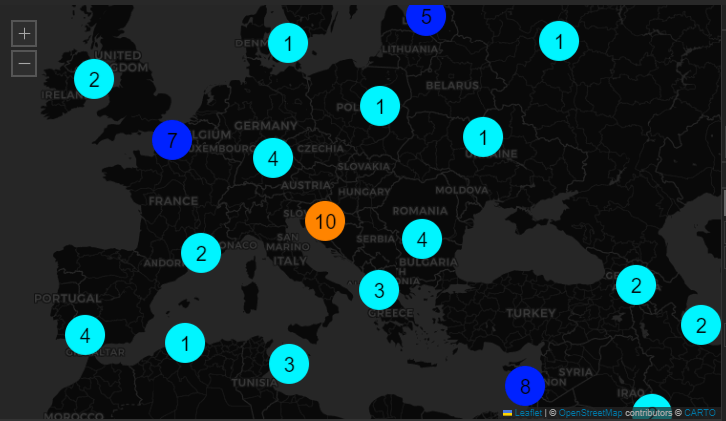Cluster Layer
The Cluster Layer groups nearby markers into a single cluster based on the current zoom level. Each cluster displays the count of data points it contains. Clustering is purely count-based—individual markers are not weighted by value.
After loading your data into a layout and selecting Cluster Layer as the type, the Cluster Layer Settings will become available under the Settings tab.

Cluster Layer Settings
Customize how clustered data appears on the map:
- Icon Size
- Adjust the size of the cluster icons.
- Font
- Change the font family used for the marker text (count labels).
- Color
- Set the font color for the marker text.
- Shape
- Choose a shape for the cluster icon (e.g., circle, square).
- Gradient
- Assign color intervals for clusters based on size. Four preset options are available to visually differentiate cluster sizes.
- Max Cluster Radius
- Set the maximum pixel radius a cluster can span from its center. Smaller values create smaller and more frequent clusters.
- Spiderfy Distance Multiplier
- Increase this value to space out individual markers when a cluster is expanded (spiderfied). Useful when using large marker icons.
- Disable Clustering At Zoom
- Define a zoom level threshold below which clustering is disabled. At or above this level, individual markers will appear separately.
Tips
- Use clustering for datasets with dense marker distributions to reduce visual clutter.
- Combine with Marker Layers to show both overview (clusters) and detail (individual points) depending on zoom.
